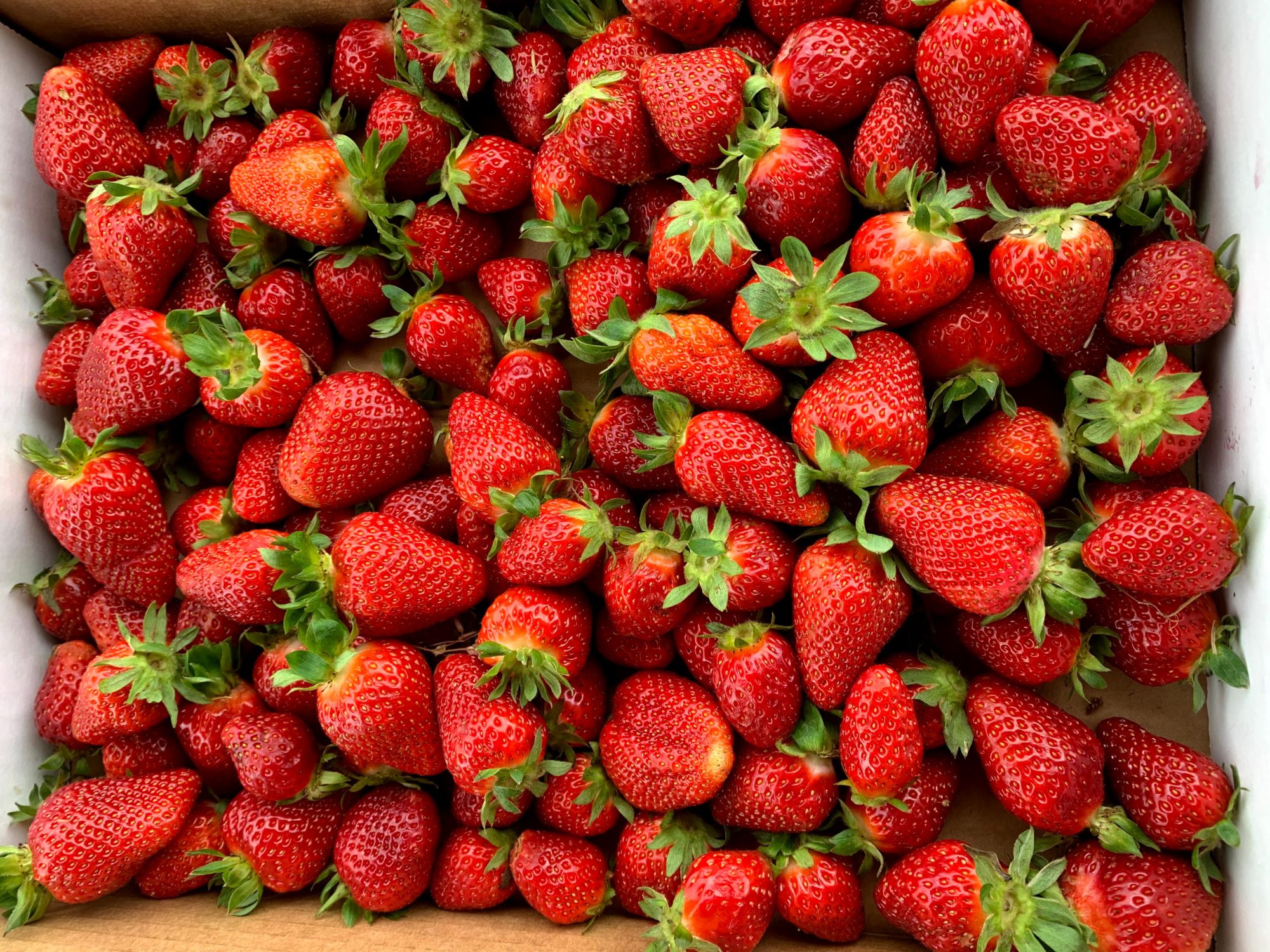Did you ever wonder...
how our spring strawberry season seems short lived? Most people only see the outcome of 9-10 months of work! So, we thought we would make a couple of posts on how we grow strawberries.
Field Preparation
We plant strawberries every fall. But, the process begins much sooner! We start preparing our strawberry fields in the spring with a cover crop. Cover crops help to hold nutrients in place and add biomass to the soil. They also encourage healthy soil bacteria and reduce some weeds. In August, we chisel plow the cover crop, breaking the soil up 8-12″ below the surface. Then, we disk the cover crop under to kill it and let it start to die down. We will disk it a couple of times before it is ready for the next step.


Bed Preparation
After the soil is as good as we can get it worked in early to mid September (we battle with drought and tropical storms this time of year), we lay make the beds. Strawberries like their roots warm and moist, not wet! We use this bed shaper/mulch layer to create the perfect environment for our plants. The bed shaper makes a 2 foot wide bed that is raised about 5-6″. Then, it covers it with black plastic mulch. This material warms the soil, reduces weeds, keeps our plants clean, & allows us to water and fertilize at the root zone.
Planting Strawberries
Our strawberry plug growers in Virginia, Chic Fish and Allen Straw start the strawberry plugs (transplants) toward the end of June from strawberry tips that come from a certified nursery. These tips/cuttings take root and grow into strong transplants for us to plant near the end of September.
We use a waterwheel transplanter to plant a lot of our crops; especially strawberries and cabbage. This machine has two metal wheels, located under the water tank, that walk along the plastic row, poking holes for the plants and adding water to each one. There are four workers that ride behind the machine, planting the strawberry plants into the prepared holes. There is also another person that walks behind the machine, ensuring everything looks right.


Erosion Control
The process of field & bed preparation leave the row middles with loose powdery soil. We love our soil and want to keep it in place. So, to prevent soil erosion from wind or rain events, we sow a cover crop in our row middles. We use annual ryegrass. It establishes itself quickly and goes dormant, like our strawberries, when it gets cold. The fencing in this picture is a new addition this year. It is an electric slant fence to keep deer out of our strawberry field. They love to eat the green leaves down to the plastic!


You must be logged in to post a comment.